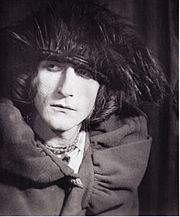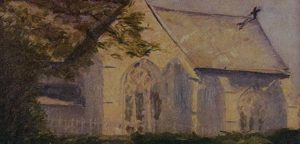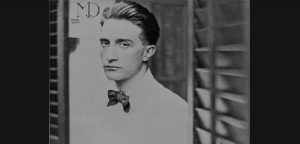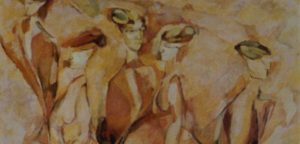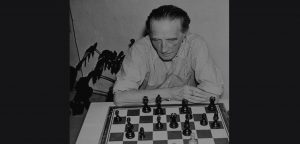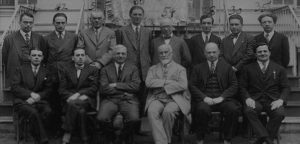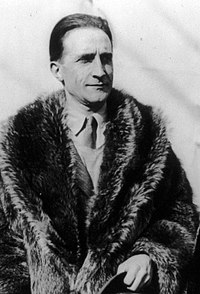Marcel Duchamp was born on July 28, 1887 in Blainville-Crevon, France.
1887 - 1968
Marcel Duchamp
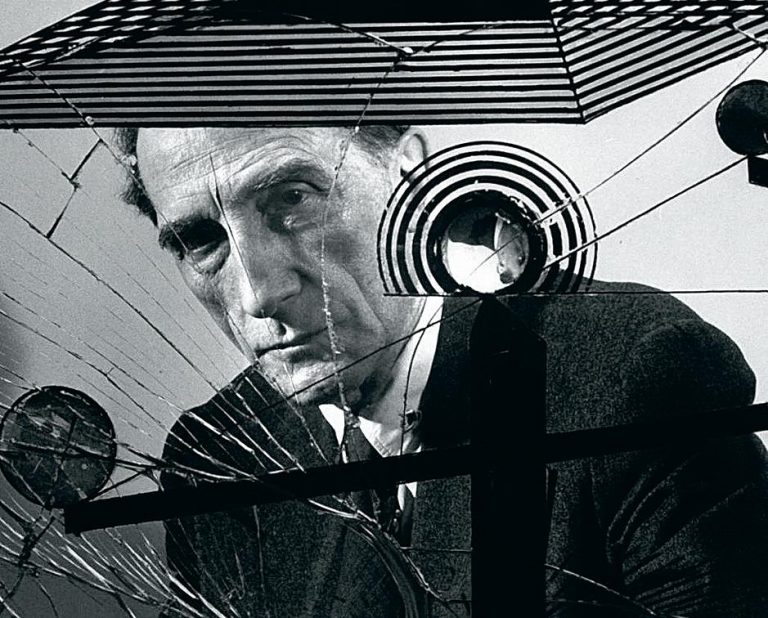
description
Henri-Robert-Marcel Duchamp was a French and American artist, an art theorist, one of the founders of such art movements as Dadaism and Surrealism.
Was born into a wealthy family. His mother, brothers and sister were engaged in painting, and Marcel grew up in a creative atmosphere, which contributed to the early manifestation of his talent. Following the older brothers, he began to paint in the style of impressionism, presenting quite interesting works from the age of 14.
Marcel Duchamp, despite a small number of his works, was one of the most influential figures of fine art after the First World War, a genius and a rebel, who pushed the scope of painting beyond what was permitted. The artist was the author of the “ready-made” method, being the first to use the idea of creating art objects from the most common objects, such as a bicycle wheel and even a urinal. The unusual and sometimes shocking creativity of Duchamp has opened wide opportunities for the further development of avant-garde art all over the world.
At the end of his career, the artist departed from painting, preferring to use already finished objects for his works, which he called “ready-made”, or creating voluminous collages. In addition to his artistic creativity, Marcel Duchamp starred in films, wrote articles and studied chess, in which he was a professional. Thanks to his versatile and unordinary talent, he left a bright mark in the art of the early twentieth century and laid the foundation for the emergence of completely new methods and trends in painting.
Key ideas:
– The works of Marcel Duchamp stand out for their eccentricity, even among the great variety of artistic styles and movements of post-war Europe. When the artist was young, after passing through the fascination with Impressionism and Fauvism, the artist decided that his paintings must not copy already known masterpieces, and started searching for absolutely new ways in the art.
– Thanks to his analytical mindset, Duchamp could brilliantly transfer movement with the help of geometric shapes, creating expressive dynamic images, typical of Cubism. His best work in this style, which caused a great resonance in society, was the picture “Nude descending the stairs” (1912). In that painting, the image of a woman that seems to be made of random pieces of figures impresses you with a special strict harmony and balance.
– According to Duchamp, in art, you do not have to rely on a purely visual effect, which he named “the pleasure of the retina”, considering it primitive and too accessible, but to approach the creation and contemplation of works of art from an intellectual and conceptual point of view.
– The artist saw the goal of art in expressing an idea, which an author desires to convey to a viewer, applying any methods for implementing this. On this basis, he began to use everyday items, such as bottle dryer, a bicycle wheel or a stool for creating art objects, claiming that only the attitude of a viewer makes this or that object significant and valuable. Proof of this was his work “ Fountain”, which is an ordinary urinal, signed by a fictitious name. This object made a real revolution, inverting all the usual concepts and canons in art.
– The artist’s work has never been popular with the general public. His paintings were shocking and incomprehensible to most; the artist preferred to shock viewers, causing their astonishment and indignation, but, at the same time, close attention to his extraordinary ideas.
– He was also an adherent of a scientific approach to art, learning the laws of perspective and optics and conducting experiments with kinetic devices. This hobby was reflected in the author’s works of art, which showed elements mechanisms and the movement of machines in the last phase of his work.
1887
1904
1911
1912
1915
1920
1934
1939
1968
The birth of the artist
He moved to Paris
He moved to Paris, where both his elder brothers had already been living, to continue his studies at the Julian Academy. There, Duchamp met many representatives of cultural circles of the capital, made friends with avant-garde poet and art critic Guillaume Apollinaire. After the participation of his works in the Autumn Salon of 1907, the artist got close to Cubists and future Dadaists, most closely interacting with Francisco Picabia, who remained his friend for the rest of his life.
Became a member of the group of Dadaists
Became a member of the group of Dadaists who regularly gathered to discuss painting and novelties in the art world. The group, apart from Duchamp, included such artists and poets as Robert Delone, Fernand Leger, Jean Metzinger and Alexander Arkhipenko. The group became known as the “De Puteaux”.
He began experimenting in the field of Cubism
He began experimenting in the field of Cubism. In the same year, “Naked, descending the stairs”, a famous painting which caused a great resonance in the society, was created. The artist withdrew that work from the exhibition in Paris at the insistence of his friends and relatives; in the next year, he presented it in the USA, at the exhibition of contemporary art Armory show, where the painting also caused lively discussions.
In connection with the First World War, he emigrated to New York
In connection with the First World War, he emigrated to New York, where he was met as a celebrity. In America, Duchamp quickly established creating connections, working with well-known critics, art collectors, artists and filmmakers. Subsequently, the artist took the citizenship of the United States. During this period, Duchamp began using already finished objects, which he called “ready-made”, for his works, the most famous of which was “Fountain” created in 1917.
Duchamp also starred in films and wrote articles
Practically moved away from artistic creativity, engaged in scientific experiments and chess, in which he achieved a great success. Duchamp also starred in films and wrote articles. During those years, he worked on the large collage “The Bride, Stripped of His Bachelors”, which was completed in 1923.
Duchamp remained in touch with a group of Surrealists in Paris
Despite his remoteness from the circles of art, Duchamp remained in touch with a group of Surrealists in Paris, made up of many of his former Dada friends. He published his works in their periodicals and helped organize surrealist exhibitions from 1938 to 1959.
The artist played an important role in organizing an exhibition of surrealists in New York
During the Second World War, he joined New York with a group of Surrealists in exile, including A. Breton, M. Ernst and others. The artist played an important role in organizing an exhibition of surrealists in New York in October and November 1942.
The death of the artist
The artist died on October 2, 1968 in Neuilly-sur-Seine, France.
Marcel Duchamp
On Artist
flow
Impressionism
Post-Impressionism
Fauvism
friends
Francis Picabia
Jacques Villon
Duchamp-Villon Raymond
Suzanne Duchamp
artists
Edouard Manet
Paul Cezanne
Pablo Picasso
Georges Braque
Henri Matisse
Albert Gleze
Jean Metzinger
By Artist
flow
Surrealism
friends
Patrick Henry Bruce
Florine Stettheimer
Constantin Brancusi
artists
Louis Marcoussis
Bela Kadar
Andre Breton
Man Ray
Andy Warhole
Hiroshi Sugimoto
Damien Hirst
Ed Rush

